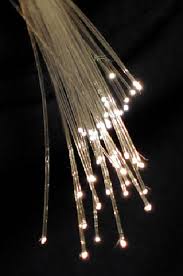To move forward in Lens Technology it is important to understand physics of light, technical optics and glass production.
Long before modern Endoscopy became a part of medical examination, Microscopy catalyzed tremendous advancements in biology and medicine. The most important scientists in 17th and 18th century were:
Light: Newton advanced theoretical knowledge of light and optics with his publication in 1704, Christian Huygens teached about the wave theory and Snellius about optical refraction.
Technical Optics: Design, optical calculation and production of optical systems is performed by opticians. Inventors: Gallileo Galilei, Johannes Keppler (telescope) Christian Huygens, Hans Lippershey, Antoni van Leeuwenhoek (Microscope)
Glass Production: Joseph von Fraunhofer
Literature: Johann Michael Conradi: "The threefold Formed Viewing Beam"
For many of us it is surprising, that lens technology did not find the way from Microscopy, which was far ahaed, to Endoscopy at an earlier stage. But the answer is simple. As long as Lightening of a human cavity was not solved advanced Lens Technology was useless because of relationship between light intensity and Lens design. Therefore advanced lightening technology was in the focus of the inventors before they concentrated on Lens Technolgy.
Freitag, 26. Dezember 2014
Mittwoch, 10. Dezember 2014
Cold Light Technology
Endoscopic History: Illumination
From the sun wich made illumination possible by the use of a mirror, followed by the candlelight, the platinum filament (for the first intracorporeal illumination) and Mignon bulb by Thomas A. Edison endoscopy got impetus again and again for lighting.


A major change and improve of endoscopic illumination has been associated with the use of fiber optics technology. For the next mile stone step, from the first use of the light bulb 1887 to the cold light illumination, it took more than seventy years.

The production of glass fibers was known in the 18th century. Thuringian glass-blowers produced at this time so-called fairy- or angel hair, which was used as decorative items. Hermann Schuller, Thuringia, has already been able to manufacture spinnable fibers in 1896 with precisely defined diameter and 1930 the machine and production process became a patent.

The glass fibers were used in 1957 by the gastroenterologist B.H. Hirschowitz in collaboration with American cystoscope Makers Inc. (ACMI) for image transmission. The English physicist Harald H. Hopkins dealt also in the fifties of the last ct. with fiber optic technology. The two physicists J. H. Blanchett and L. Curtis constructed 1960, the first endoscope with fiber optic lighting for ACMI.

Karl Storz produced the first Cold light endoscopes in 1963. He had to import the glass fibers from USA. The term "cold light" was connected with his name through the distribution of products of the company Gentile (France), who used the term "cold light" long time ago.


Karl Storz secured by the combination of the use of glass fibers for illumination, by improving the optical system with rod lenses and the production of an excellent cold light source the market leadership in endoscopy for decades. Karl Storz has also always recognized at an early stage how key technologies can be used for endoscopy, promoted their innovations at an early stage and forwarded the dissemination of the resulting products against opposition . Through this remarkable course of action, the name Karl Storz is more connected with the invention of the cold light than that of ACMI.
From the sun wich made illumination possible by the use of a mirror, followed by the candlelight, the platinum filament (for the first intracorporeal illumination) and Mignon bulb by Thomas A. Edison endoscopy got impetus again and again for lighting.
A major change and improve of endoscopic illumination has been associated with the use of fiber optics technology. For the next mile stone step, from the first use of the light bulb 1887 to the cold light illumination, it took more than seventy years.
The production of glass fibers was known in the 18th century. Thuringian glass-blowers produced at this time so-called fairy- or angel hair, which was used as decorative items. Hermann Schuller, Thuringia, has already been able to manufacture spinnable fibers in 1896 with precisely defined diameter and 1930 the machine and production process became a patent.
The glass fibers were used in 1957 by the gastroenterologist B.H. Hirschowitz in collaboration with American cystoscope Makers Inc. (ACMI) for image transmission. The English physicist Harald H. Hopkins dealt also in the fifties of the last ct. with fiber optic technology. The two physicists J. H. Blanchett and L. Curtis constructed 1960, the first endoscope with fiber optic lighting for ACMI.
Karl Storz produced the first Cold light endoscopes in 1963. He had to import the glass fibers from USA. The term "cold light" was connected with his name through the distribution of products of the company Gentile (France), who used the term "cold light" long time ago.
Karl Storz secured by the combination of the use of glass fibers for illumination, by improving the optical system with rod lenses and the production of an excellent cold light source the market leadership in endoscopy for decades. Karl Storz has also always recognized at an early stage how key technologies can be used for endoscopy, promoted their innovations at an early stage and forwarded the dissemination of the resulting products against opposition . Through this remarkable course of action, the name Karl Storz is more connected with the invention of the cold light than that of ACMI.
Abonnieren
Posts (Atom)

